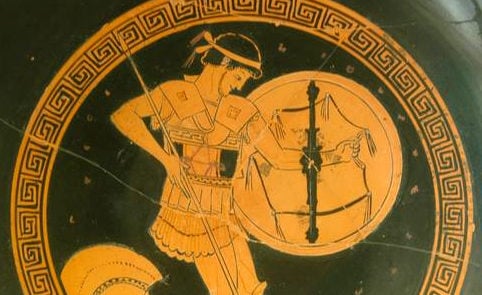

Ancient Sparta has been known for centuries around the world for its meticulous and harsh training imposed on every boy of the city. The Agoge was a rigorous education as well as a military training program that ancient Sparta followed with an almost religious zeal for many years. Mandatory for all Spartan boys except firstborn sons of the two ruling houses, its primary aim was to produce extremely strong, intellectually and physically capable, as well as loyal Spartan soldiers.
The legendary lawgiver Lycurgus has been believed to be the one who introduced the Agoge in the 7th century BC. His goal was said to be the transformation of Spartan society in order to build its formidable military might, that very might that made the name Sparta a synonym for strength.
Spartan boys entered the stage of the Agoge at the age of seven. These young boys were then placed under the supervision of the paedonomos (which is Greek for boy-herder). The three main stages of the Agoge system were:
The Spartan boys were organized into “herds” always under a leader who was much older than them. A crucial aspect of this type of organization was that loyalty to their communal mess hall, or “syssitia,” was fundamentally emphasized, putting it above any other family ties the boys had. Following this 14-year-long education, the boys who passed the Agoge requirements became full Spartan citizens at the age of thirty.

The Agoge was heavily focused on teaching young Spartans combat skills, pain tolerance, stealth, and of course, obedience. Boys in training underwent extremely harsh and brutal physical conditioning. This had a sole aim: to hone strong warrior physiques that could endure the worst conditions during a real-life battle. The boys were specifically trained in boxing, wrestling, javelin throwing, discus throwing, and, surprisingly enough, dancing. As expected, punishments were often very harsh for any signs of weakness or failure. These were not tolerated under any circumstances.
To build and shape their resilience, boys were given minimal clothing and food regardless of weather conditions. This even went as far as forcing the boys to steal so as to survive. They faced flogging if caught. This contradiction had a clear motive. You have to do what you have to do in order to survive without getting caught, as that would lead to designated punishments.
The Krypteia, a type of secret police that was everywhere in ancient Sparta, sent older boys on covert missions to terrorize the Helot slave population as well. This was, in a sense, a recruitment procedure for the state authorities among the younger Spartan generations.
In addition to this extremely strict military training, the Agoge obviously included other elements that would shape the full personalities of future citizens. For example, literacy, music, poetry, and some academics were part of the education of these boys. Nonetheless, the primary focus was placed on physical education.
Spartan boys also memorized and sang many war hymns and learned to read and write in order to be deemed capable and worthy citizens. Hunting and athletic competitions sharpened their skills, too, and were part of their long education.
Moreover, it was customary for older boys to mentor younger ones, particularly in elements such as the warrior ethos. It should be noted that especially close bonds, even sexual relationships, between boys were actually encouraged to cement loyalty. This obviously has to be seen through the lenses of the societal and ethical norms of these times to be fully understood by today’s standards.

The Agoge produced the famously skilled and disciplined hoplite warriors of Sparta, who became famous across lands and generations. This allowed Sparta to dominate Greece militarily for centuries, becoming the only true opponent of Athens. Philosophers such as Plato and Xenophon admired the system and mentioned many details of this particular educational and training system.
However, the Agoge began to lose relevance in the 3rd century BC after the fateful defeat of Sparta by Thebes at the Battle of Leuctra in 371 BC. Despite the loss, it was briefly revived in the 220s BC before being permanently abolished in 188 BC.
Following the Roman conquest of Greece a few years later, an alternative and less intense form of the Agoge was revived right after Sparta was conquered in 146 BC. Some elements of the olden Agoge persisted into the early years of the Roman Empire before the Visigoth sack of Sparta took place in 396 AD. This almost ruined the city completely.
While undoubtedly controversial for its harshness, the Agoge has definitely left an inedible mark not only in Greek but also global history. It has inspired military training systems in Greece and beyond for centuries, though its emphasis on brutal discipline and state indoctrination remains contentious to this day, particularly if seen under today’s norms of what is and isn’t acceptable.
